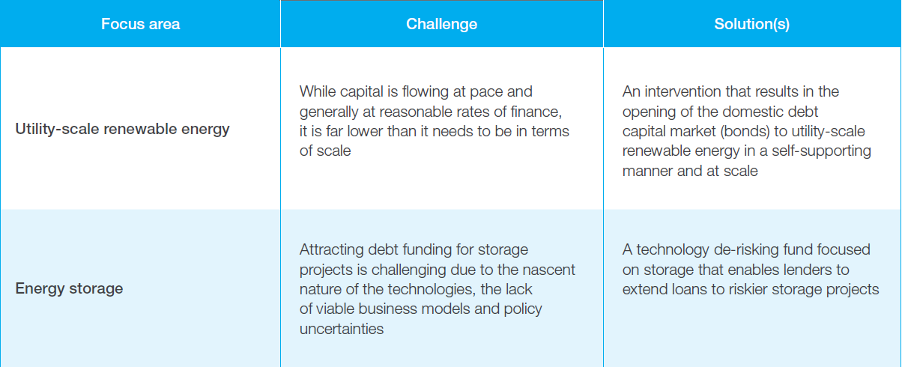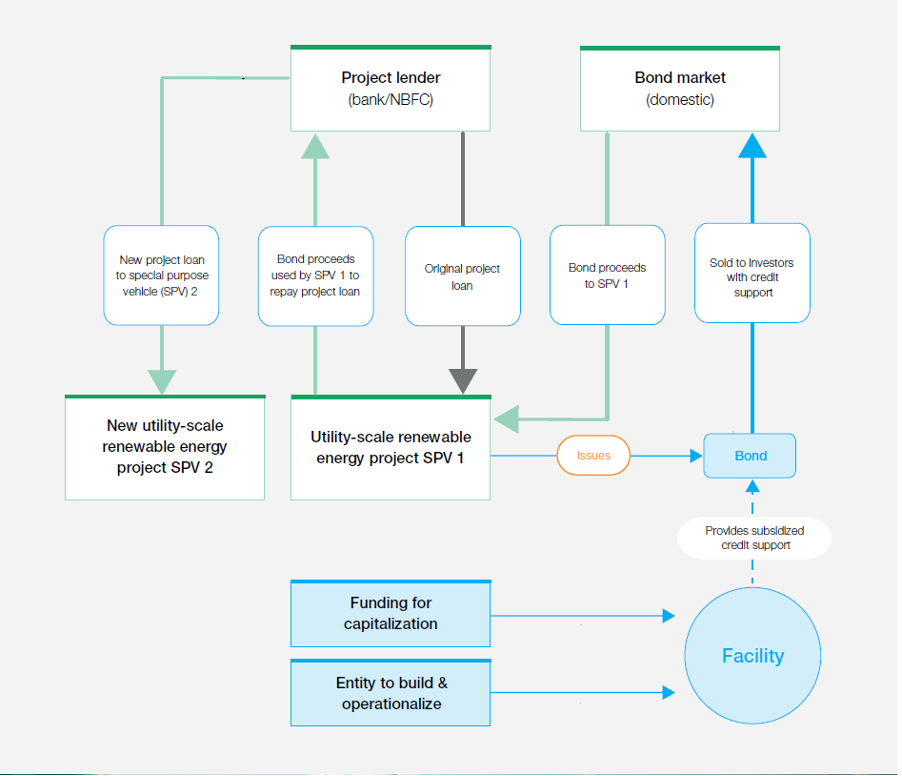India has charted ambitious goals for its energy transition. These include achieving 50% cumulative electric power installed capacity from non-fossil fuel-based energy resources. Additionally, it has committed to reducing the emissions intensity of its GDP by 45% (compared to 2005 levels), also by 2030. From a longer-term perspective, India has stated its goal of achieving net-zero emissions by 2070.
The associated investment requirements are immense. From a near-term perspective, the Parliamentary Standing Committee on Energy (2021-22) released the Financial Constraints in the Renewable Energy Sector report in January 2022 to highlight the immense amount of investment at an annual investment requirement of USD 20 to 27 billion until 2030 against the flows of USD 10 billion mobilised over last few years.
In line with the targets, the paper proposes two financial interventions built along with the stakeholders in the area that could create the maximum impact.
Table 1 Focus area and solution summary

The first is a facility to bridge the rating gap and recycle capital focussed on utility scale renewables by accessing the bond market with a virtual floor of AA and above for credit rating of bonds to tap the market. While the ratings for project loans to renewable projects have improved per CEEW analysis by 2020, almost 90 per cent of the project tracked had an investment grade rating, with over 60 per cent of the projects being assigned a rating of A and above. This means that while most project loans can still not access the domestic bond market unassisted, the cost of bridging the gap has come down significantly.
The following facility, shown in figure 1, presents a mechanism to help bridge the rating gap and recycle the capital using the bond market.
Figure 1 - A facility to bridge the rating gap at subsidised rates and recycle capital

The other solution is the technology derisking fund - A fund focusing on reducing risks associated with the nascency of storage technologies and business models in India that could be a valuable tool in promoting financing for energy storage projects.
The fund would be applicable in states where variable renewable energy generation is exceptionally high and would have two mandates. With financial coverage at its core, the fund would offer two forms of coverage to participating lenders:
a. A payment security mechanism to cover any delays experienced by the project developer in collecting invoices from off-takers.
b. A partial coverage against performance-related and other delays arising from technological and operational issues across the project life cycle extended to the portfolio.
For more information and details about the solutions, structure, and implementing partners, please download the report

